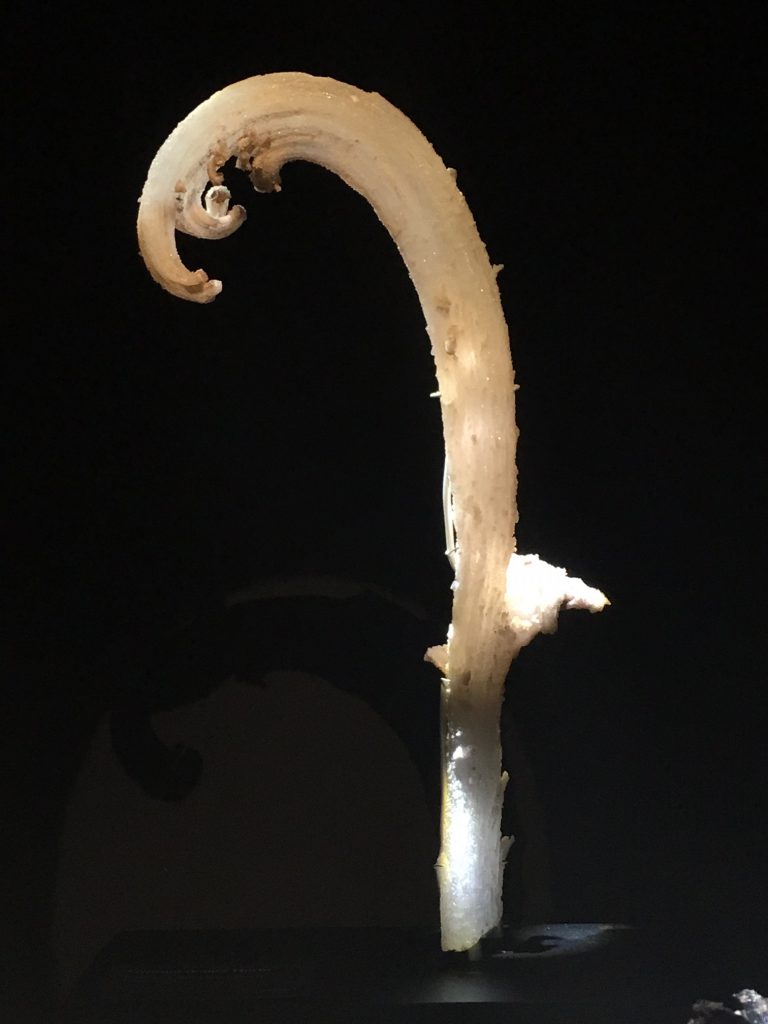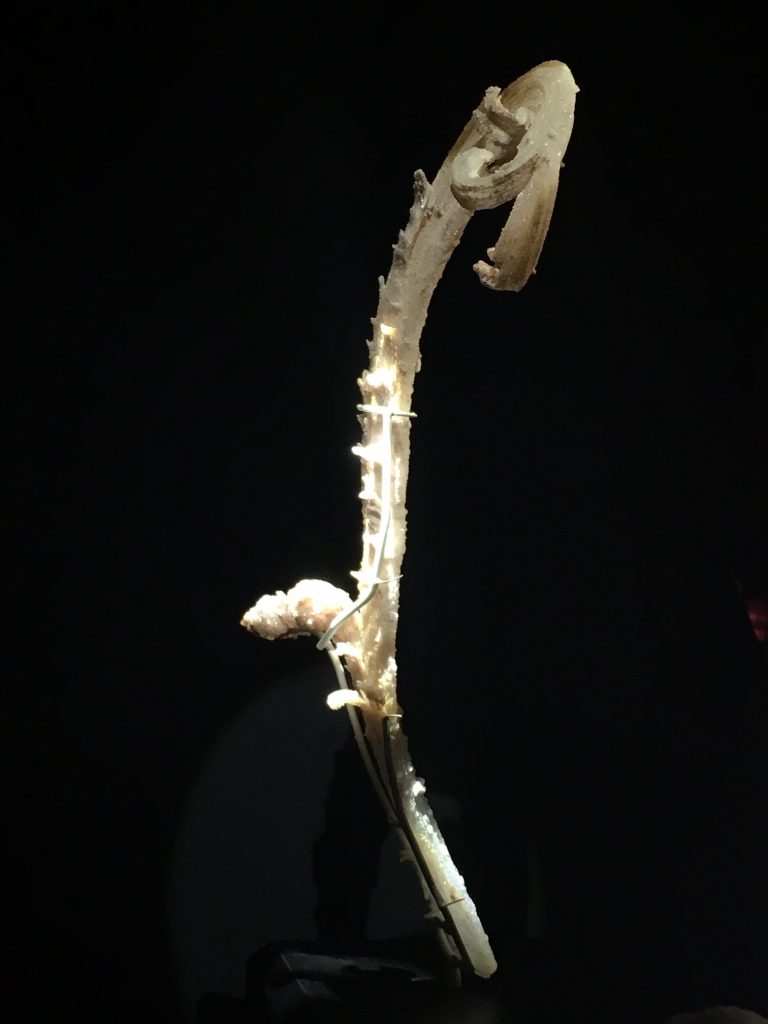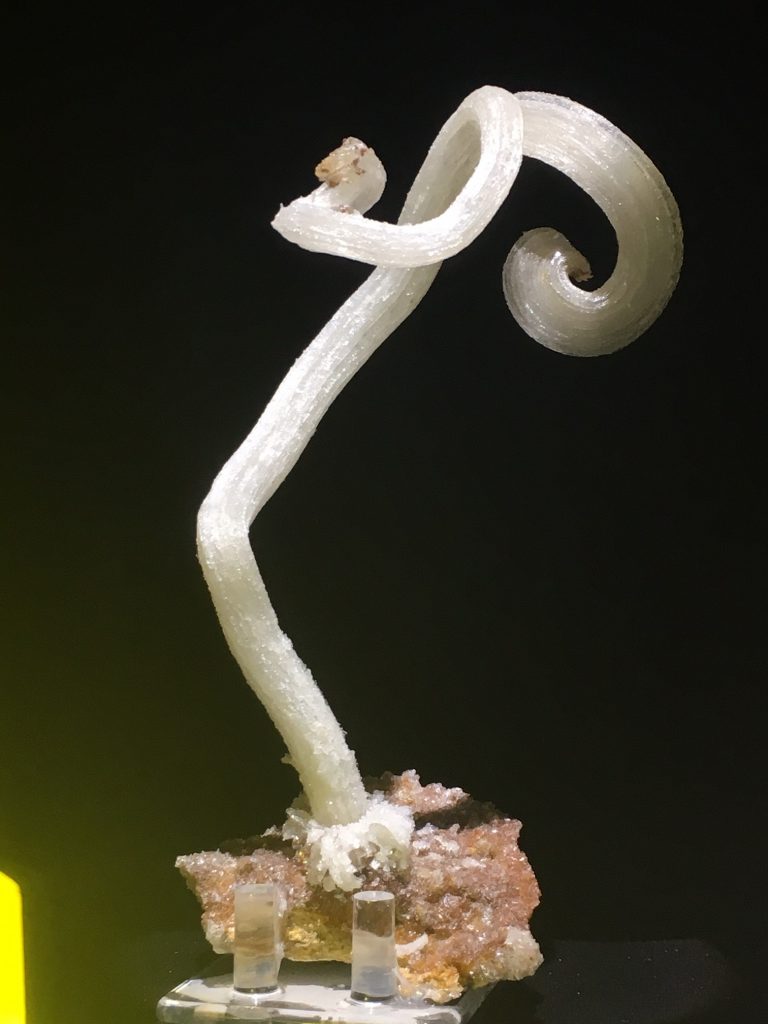Museum guests who find their way into the Cullen Hall of Gems and Minerals usually have no trouble finding something to be in awe of. Passing through the Hall on my daily rounds, while looking for new hidden gems to spotlight, I rarely make it further than a few feet from the entrance before I hear someone let out an ooh or an ahh. One object that seems to cause a conspicuous number of those sorts of exclamations is the selenite wand (pictured above).
Selenite is a form of gypsum, having the same chemical formula (CaSO4·2H2O) but also a defined crystalline structure and a level of transparency that most gypsum lacks. Selenite basically means “moonrock” in Ancient Greek, the name is inspired by the crystal’s lustrous qualities.
You may not know this, but you are surrounded by gypsum right now. Gypsum is what sheetrock is made of and so it composes the walls of most modern homes. Gypsum’s use as a building material goes back thousands of years. It was used to make plaster by the ancient Greeks and the ancient Egyptians.
The reason that gypsum has been used for this purpose for so long is it’s unique chemical structure: CaSO4·2H2O. Notice a familiar molecule in that formula? That’s right, H2O! Gypsum is partly composed of water. When the mineral is heated the water evaporates and the gypsum transforms into dry, powdery anhidrite. When water is added crushed anhidrite, it is quickly absorbed to make a thick and malleable paste which hardens when dry—perfect for plastering walls, creating molds for metal smelting and even making cement! Think of how different our world would be if we didn’t have gypsum. In fact, our fossil specimens are plastered after being excavated to protect them from potential damage while being transported and stored. So without gypsum our Morian Hall of Paleontology might look quite different!
Most gypsum occurs in massive layers of sedimentary rock, but selenite wands like these precipitate, or “flower” from the walls of caves or hollow pockets in rock layers when the correct chemicals and conditions are present. They form without human interference. These gypsum wands are truly nature’s masterpieces. Next time you visit HMNS, swing by the Cullen Hall of Gems and Minerals to see what nature has done with a mineral that humans have used to construct their homes, create their art and preserve their past with for thousands of years.























